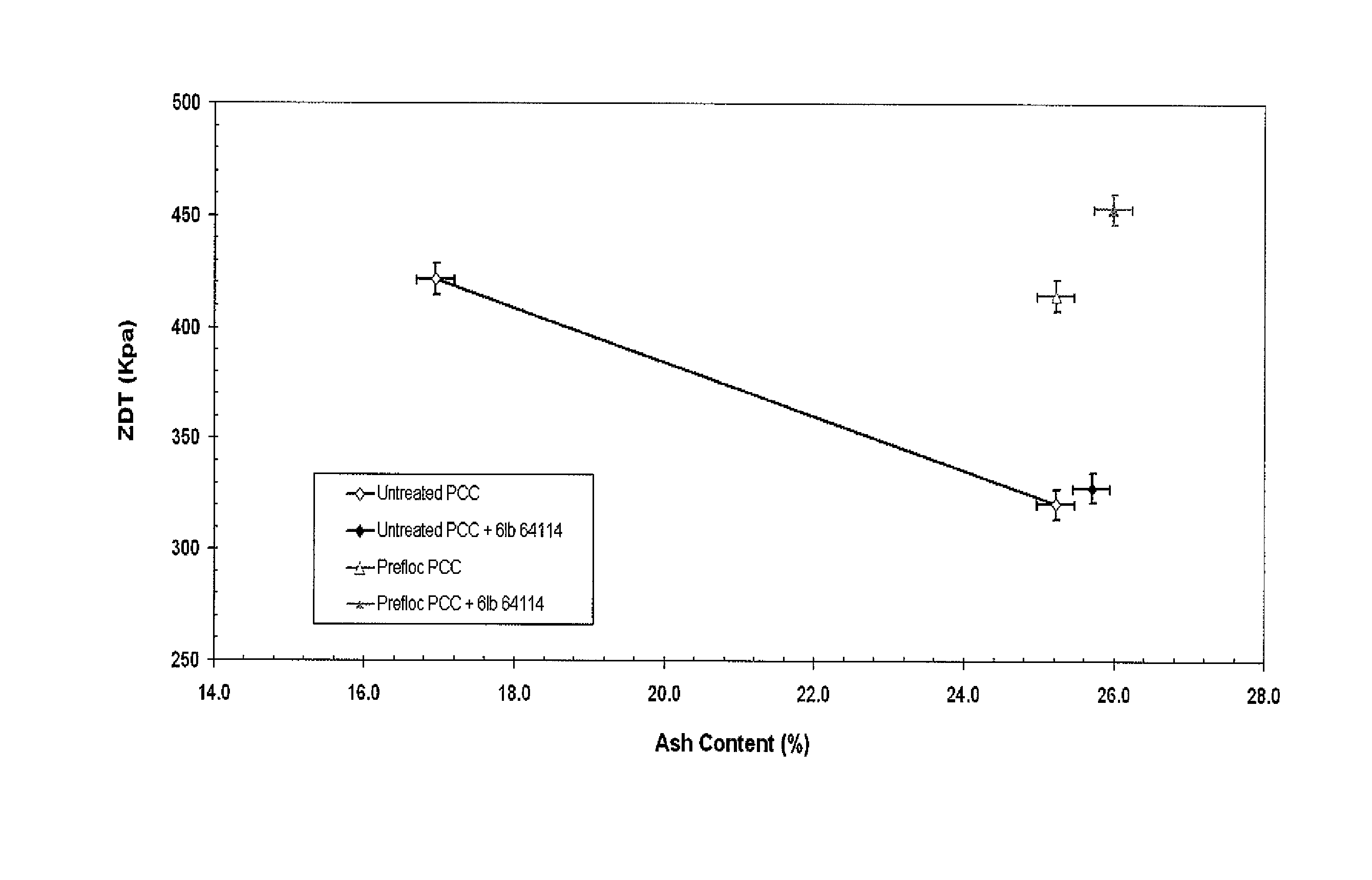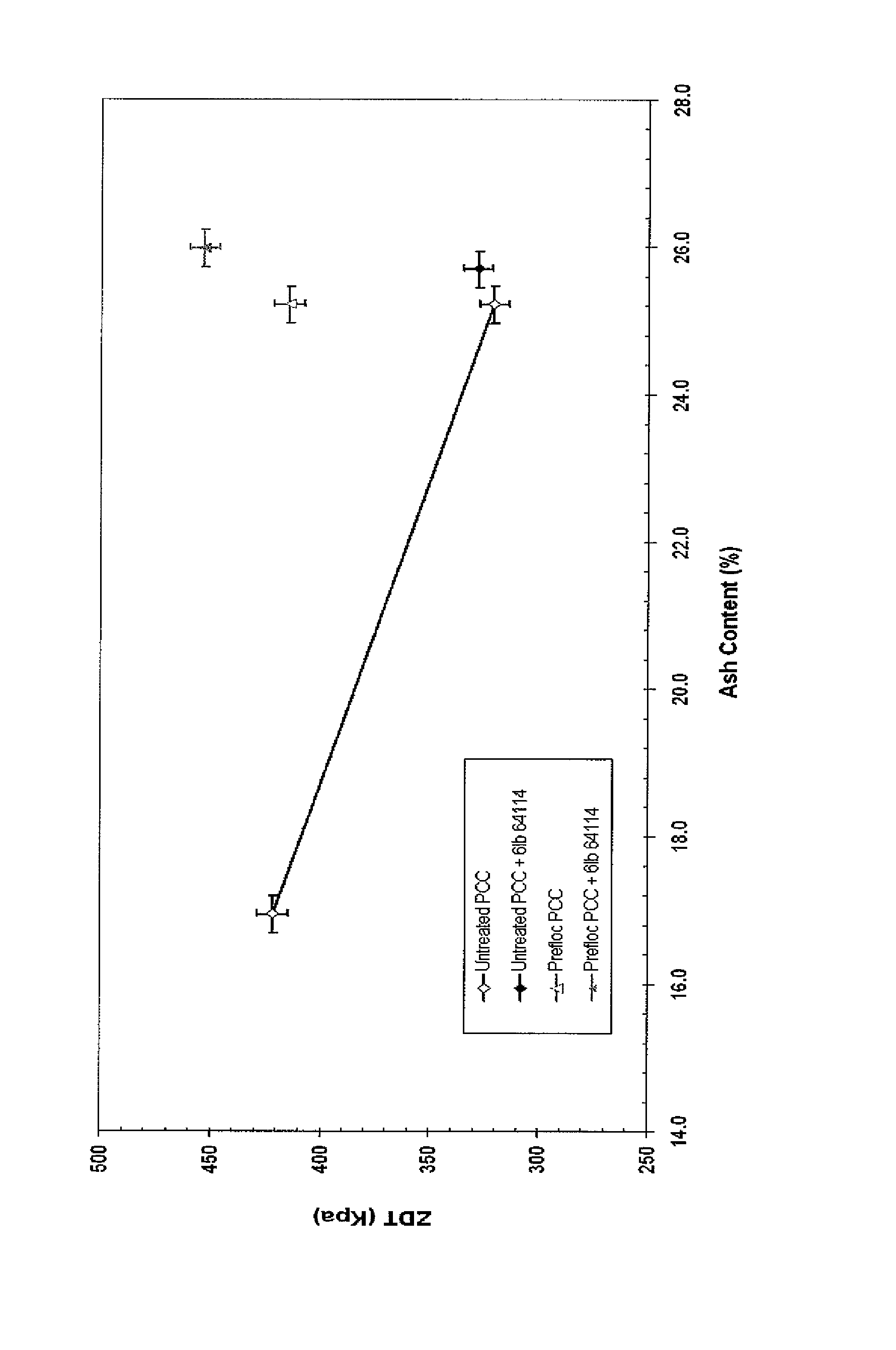Method of increasing filler content in papermaking
a technology of filler content and papermaking, which is applied in papermaking, non-fibrous pulp addition, reinforcing agent addition, etc., can solve the problems affecting the number and affecting the strength of the bonding, so as to achieve the effect of increasing the filler conten
- Summary
- Abstract
- Description
- Claims
- Application Information
AI Technical Summary
Benefits of technology
Problems solved by technology
Method used
Image
Examples
examples
[0042]The foregoing may be better understood by reference to the following example, which is presented for purposes of illustration and is not intended to limit the scope of the invention.
[0043]A furnish was produced containing 25% pine softwood and 75% eucalyptus hardwood. Both the softwood and hardwood were reslushed from dry lap. The filler used was Albacar HO PCC obtained from Specialty Minerals Inc. The filler material preflocculation was performed with the dual flocculant approach described in example 14 of U.S. application Ser. No. 12 / 431,356. During the handsheet preparation, 6 lb / ton strength additive (Nalco 64114, a glyoxalated Acrylamide / DADMAC copolymer available from Nalco Company, Naperville, Ill., USA) was added. The results are displayed in FIG. 1.
[0044]While this invention may be embodied in many different forms, there are shown in the drawings and described in detail herein specific preferred embodiments of the invention. The present disclosure is an exemplificatio...
PUM
| Property | Measurement | Unit |
|---|---|---|
| size | aaaaa | aaaaa |
| size | aaaaa | aaaaa |
| median particle size | aaaaa | aaaaa |
Abstract
Description
Claims
Application Information
 Login to View More
Login to View More - R&D
- Intellectual Property
- Life Sciences
- Materials
- Tech Scout
- Unparalleled Data Quality
- Higher Quality Content
- 60% Fewer Hallucinations
Browse by: Latest US Patents, China's latest patents, Technical Efficacy Thesaurus, Application Domain, Technology Topic, Popular Technical Reports.
© 2025 PatSnap. All rights reserved.Legal|Privacy policy|Modern Slavery Act Transparency Statement|Sitemap|About US| Contact US: help@patsnap.com


